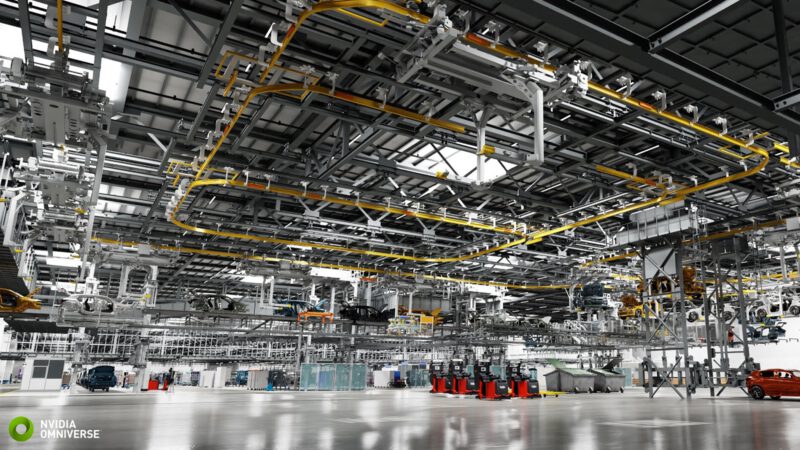Building a new automotive factory is a billion dollar investment. Retooling an existing factory can also mean hundreds of millions of dollars of expense.
On the other hand, increasing manufacturing efficiencies go straight to the bottom line. Efficient manufacturing is a key element in building a successful automotive company. Ask Elon Musk about the impact of “manufacturing hell” on Tesla’s bottom line.
Enter the latest technology tool — the ability to build a digital twin of a factory, replicating the building, its assembly equipment, robots and even its employees. Using software from Nvidia that allows for design collaboration in a shared virtual space that also follows all of the laws of physics, BMW Group is the first auto company to try out this advanced system. Digital humans trained with data from real workers can simulate ergonomics and efficiencies of a new plan.
The early returns on this new technology venture are encouraging. Milan Nedeljkovic, member of the board of management of BMW AG responsible for production, said he expects to see a big impact.
“These new innovations will reduce the planning times, improve flexibility and precision, and at the end produce a 30% more efficient planning process,” Nedeljkovic said.
He characterized the software as a “revolution” for BMW’s planning processes.
BMW has 31 factories around the world building 40 different models and employing 57,000 workers. Each model has more than 100 options, so the variations are significant. BMW says there are 2,100 possible ways to configure a typical new model. Essentially, the cars end up as custom productions. But those custom productions mean endless variations in the manufacturing process.
Worldwide Collaboration
BMW’s thousands of planners, product engineers, facility managers and lean manufacturing experts from different corporate locations now collaborate in this metaverse to design, plan, engineer, simulate and optimize the company’s manufacturing processes.
Those designs can take place before a physical factory is built or can be tested on an existing virtual factory floor. Planners can even travel virtually into the simulation with a motion capture suit to record task movements that can then be applied to the design. Since the laws of physics apply in this metaverse, the results from this simulation can be expected to be born out when they’re put in place in the real world.
The teams from BMW use software like Revit, Catia or point clouds to design and reconfigure its factories. Factory reconfiguration is a regular thing in the automotive world, triggered with every new model or every significant change in an existing model. Being able to work through these changes in a full digital twin of a factory allows the impact on workers and machines to be sorted out before the moves are made in reality.
Artificial Intelligence (AI) is also active in these digital factories, where different use cases can be put into place using AI. BMW predicts use of this technology will end up reducing planning times, improve flexibility and produce a more efficient planning process.
The Nvidia software involved in the BMW project includes its Omniverse Enterprise platform that enables global 3D design teams to work together simultaneously across multiple software suites in a shared virtual space. Two end-user applications are used: Nvidia Omniverse Create, which accelerates scenes composition and allows users to affect real-time assembly, lighting, simulation and rendering of scenes, and Nvidia Omniverse View, which gives photorealistic rendering and powers collaborative design and visualization of architectural and engineering projects.
Drawing on its extensive experience in the gaming world, the end result is, when Nvidia and BMW say digital twin, a viewer of images from that factory would be hard-pressed to differentiate them from similar ones from the physical factory.
In addition, the Nvidia Isaac platform manages virtual robotics, while the Nvidia EGX edge computing platform provides a basic program that can run on local desktops and laptops throughout an organization like BMW. This is taking a “software-defined vehicle” to a whole new level.
As Nvidia Founder and CEO Jensen Huang said about this software: “The science-fiction metaverse is near.” It’s taking the Musk concept of machines building machines to another level.
In addition to BMW, Nvidia said more than 400 companies and 17,000 users have downloaded the software to explore applications in a variety of fields. n










